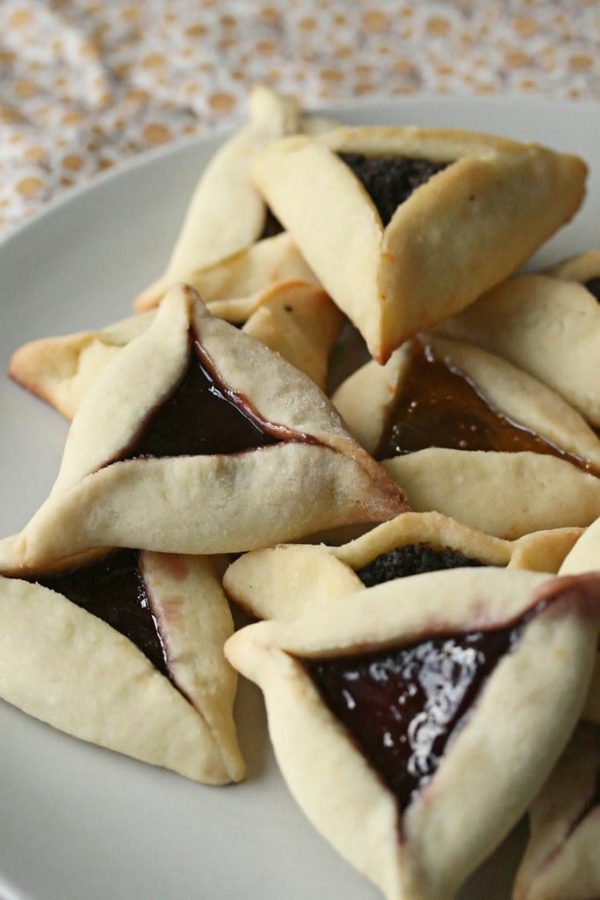The Jewish holiday, Purim, was celebrated from sundown mar. 9 to mar. 10. Those who celebrate participated in ritual activities and ate traditional food.
Purim follows the story of a Persian King and his new wife Esther. The holiday celebrates Esther after she told the King that she was Jewish and saved the Jewish people from Haman. Haman was an Perisan prime minister who attempted to kill all the Jewish people.
The holiday is celebrated with traditional foods and activities. Before the holiday starts a small fast is performed, like the one Esther asked the Jewish people to perform. One of the most common foods eaten is Hamantaschen, triangular cookies or pastries filled with jams, chocolates or other filling. The pastries are created to look like triangular hat Haman wore.
Other foods and drinks consumed are bean dishes because Esther kept kosher while living with the King, causing her to primarily eat beans and peas and wine. According to My Jewish Learning, the Talmud, a compilation of the Jewish oral law for the Jewish people, instructs people to drink until they can not distinguish between “blessed by Mordechai” and “cursed by Haman.” Mordechai was Esther’s cousin who told her of Haman’s plan to kill the Jewish people.
Another tradition performed is giving back to those in need and making sure that they can participate in the celebrations. People create gift baskets called Mishloach Manot for friends and family, as well as Matanot l’evyonim or gifts for those in need. The baskets are filled with different types of foods and wine.
Besides eating traditional foods and drinks, Jewish people also attend synagogue where they listen to the reading of Esther’s story and recite prayers and songs. The story of Esther is called the Megillah, in Hebrew, which translates to The Scroll. During the reading, people shake grogger, a type of noise maker, whenever Haman’s name is read. The groggers drowns out Haman’s name, symbolically blocking him out of the story.
Synagogues and Jewish organizations put on carnivals to celebrate as well. At the carnivals, people dress up in costumes and play different games. According to Time, costumes are worn as an ode to Esther who hid her true identity from the King.
Local synagogue Temple Beth Ami, put on a carnival on mar. 8 called Purim Palooza. At the carnival, the part of Megillah was read, and a Purim Spiel was performed to the tune of Runt. The Spiel was performed by the children of the Synagogue. A Purim Spiel is a play or skit put on for Purim celebrations. On mar 9. the full Megillah was read.
According to Rabbi Gary Pokras, Beth Ami’s senior rabbi, Purim is a holiday full of jokes and laughs. In Israel, children dress up and go from house to house collecting different treats. Although the holiday is lighthearted it has a deeper meaning. Below the surface, the story tells a tale of a person forced to hide her Judiasim in a hostile world.








